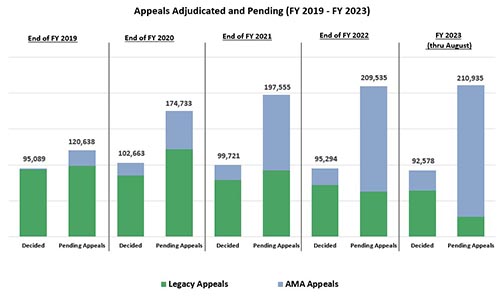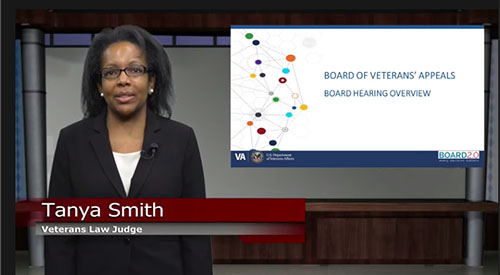![]() On July 28, 1933, President Franklin D. Roosevelt created the Board of Veterans’ Appeals (Board) by Executive Order 6230, Veterans Regulation No. 2(a). The Board was delegated the authority to render the final decisions on appeal for the Administrator (now Secretary) and was directly responsible to the Administrator (Secretary). The Board was charged “to provide every possible assistance” to claimants and to take final action that would “be fair to the Veteran as well as the Government.” The Board continues to meet this charge. Learn more »
On July 28, 1933, President Franklin D. Roosevelt created the Board of Veterans’ Appeals (Board) by Executive Order 6230, Veterans Regulation No. 2(a). The Board was delegated the authority to render the final decisions on appeal for the Administrator (now Secretary) and was directly responsible to the Administrator (Secretary). The Board was charged “to provide every possible assistance” to claimants and to take final action that would “be fair to the Veteran as well as the Government.” The Board continues to meet this charge. Learn more »
 How do I file an appeal?
How do I file an appeal?
If you are dissatisfied or disagree with a VA decision, you have the right to file an appeal with the Board of Veterans’ Appeals. The Board will review the evidence presented and issue a decision.
Learn more about the appeals process or start your appeal on line
How do I find the status of my appeal?
You can find the status of your appeal from the “Check your claim or appeal status” web page then following the guidance listed there. You can also call 1-800-827-1000.
When will your appeal be decided?
As a general matter, the Board is required by law to review appeals in docket order. However, the Board may advance an appeal on the docket (AOD) if the appellant demonstrates unusual hardship such as serious illness, severe financial hardship, or other sufficient cause. Additional information on AOD status is located under Customer Service.
Why does my appeal at the Board of Veterans’ Appeals (Board) take so long, and what is the Board doing about it?
The Board understands that many Veterans and appellants have been waiting a long time for a decision. We acknowledge that this wait can be very frustrating and want to explain why getting a Board decision can take a long time, and what options Veterans and appellants have to reduce the time they have to wait for a decision. The Board decision wait times page is available with additional details.
Who is my hearing coordinator?
If Veterans, appellants, representatives or Regional Offices have questions about their hearings, the Hearing Coordinator List provides the hearing team coordinator points of contact.
In 2017 the AMA was passed and took effect in February 2019. AMA created a new decision review process allowing Veterans to choose from three lanes to determine the path their appeal will follow. The three lanes to choose from are supplemental claim, higher-level review, and appealing to the Board of Veterans’ Appeals.
Resources
- View the Board’s “What can Veterans do if they don’t agree with their initial claim decision” factsheet (PDF, 1 page) for more information.
- New VA appeals status tool provides tracking and transparency for Veterans
- Appeals status video
- VA, U.S. Digital Service launch new web tool to help Veterans track their benefits appeals
- Your rights to appeal our decision
What happens after you receive your initial claim decision?
![]()
Initial Claim decision received. Do you agree with your initial decision?
Yes?
You are done! Please visit the VA website to see what benefits and services you may receive.
No? Choose one of three options:
- Supplemental Claim—Add or identify new evidence relevant to your claim and a reviewer will look at all evidence and decide if it changes the decision; or
- Higher-Level Review—A senior reviewer will review the evidence already in your file to see if the decision should be changed; or
- Appeal to the Board of Veterans’ Appeals—Next Steps…Choose one of three options:
- Direct Review—A judge will review your appeal. No hearing and no new evidence submitted; or
- Evidence Submission—You have additional evidence to submit and must do so within 90 days of filing your appeal. A judge reviews with no hearing; or
- Hearing with a Veterans Law Judge—You will have a hearing and can submit new or additional evidence in support of your appeal.






















